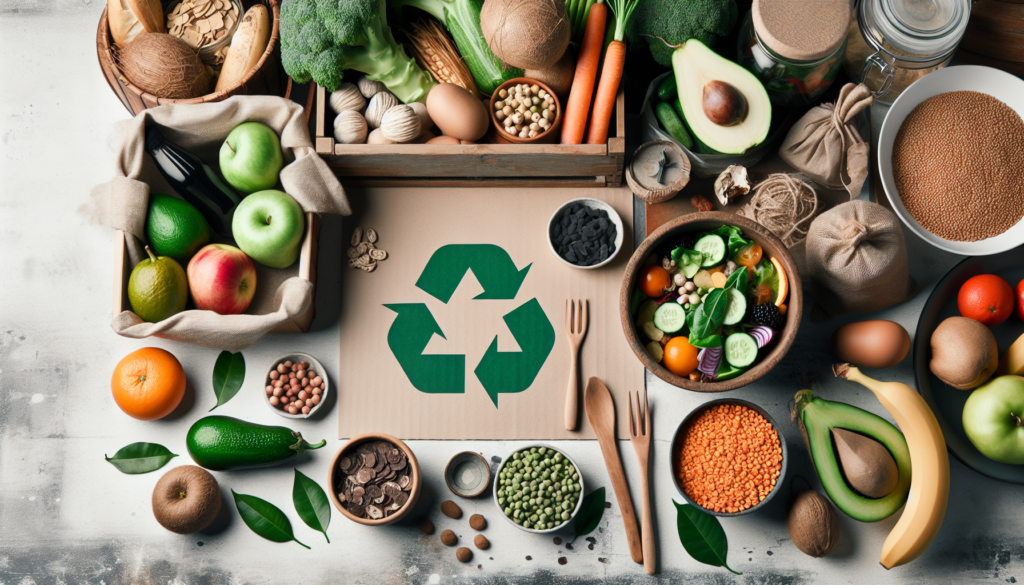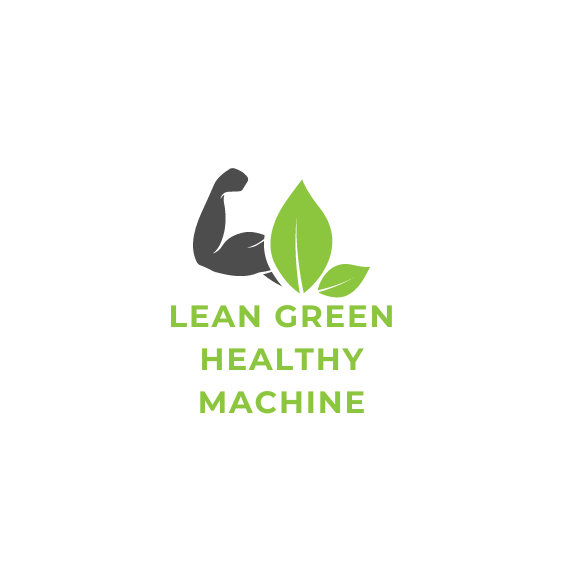If you’ve ever wondered how to make a positive impact on the environment through your food choices, then eco-friendly eating is just the thing for you. It’s not just about eating your vegetables; it’s about embracing a lifestyle that values nutrition, wellness, and sustainability. By incorporating green foods into your daily diet, like leafy vegetables and powerful superfoods, you can not only improve your own health and wellbeing, but also contribute to the greater goal of protecting our planet. So why wait? Let’s explore the world of eco-friendly eating and discover how you can make a difference one meal at a time.

Benefits of Eco-Friendly Eating
Reduced carbon footprint
One of the significant benefits of eco-friendly eating is the reduced carbon footprint. By opting for sustainable food choices, you positively impact the environment and help combat climate change. Traditional food production and distribution processes contribute to greenhouse gas emissions through agricultural practices, transportation, and packaging. However, by choosing eco-friendly options, such as locally sourced produce and plant-based protein sources, you can significantly decrease your carbon emissions and contribute to a healthier planet.
Conservation of water resources
Eco-friendly eating also plays a crucial role in conserving water resources. Agriculture accounts for a significant portion of global water usage, and unsustainable farming practices can lead to excessive water waste and pollution. By supporting sustainable agriculture methods, such as organic farming, you can help reduce water pollution caused by harmful pesticides and synthetic fertilizers. Additionally, consuming plant-based protein sources, which require less water to produce compared to animal products, further conserves water resources.
Preservation of biodiversity
Choosing eco-friendly food options contributes to the preservation of biodiversity. Unsustainable farming practices, such as the use of chemical pesticides, destroy habitats and harm beneficial organisms, ultimately leading to a loss of biodiversity. By consuming organic foods, sustainable seafood choices, and locally sourced produce, you support farming practices that prioritize biodiversity conservation. This not only helps protect various species and ecosystems but also promotes a more resilient and sustainable food system for future generations.
Green Food Choices
Locally sourced produce
Choosing locally sourced produce has numerous benefits. Firstly, locally grown fruits and vegetables are often harvested when they are at their peak freshness and nutritional content, ensuring that you get the maximum health benefits from your food. Additionally, buying local supports small-scale farmers in your community, contributing to a thriving local economy. Moreover, reducing the distance your food travels before reaching your plate significantly minimizes carbon emissions associated with transportation.
Organic foods
Organic foods are grown without the use of synthetic pesticides, genetically modified organisms (GMOs), or chemical fertilizers. By opting for organic options, you can reduce your exposure to harmful chemicals and support sustainable farming practices. Organic farming methods prioritize soil health, biodiversity, and water conservation, ensuring the long-term viability of the ecosystem. Choosing organic foods also supports farmers who strive to produce food in an eco-friendly manner.
Plant-based protein sources
Incorporating plant-based protein sources into your diet is not only beneficial for your health but also for the environment. Animal agriculture contributes significantly to deforestation, greenhouse gas emissions, and water pollution. By choosing plant-based protein sources like legumes, tofu, and tempeh, you can reduce the environmental impact of your diet. Plant-based proteins are also often more sustainable in terms of land and water usage, making them an eco-friendly choice.
Sustainable seafood choices
When consuming seafood, it is essential to make sustainable choices to protect our oceans and marine ecosystems. Overfishing, destructive fishing practices, and bycatch threaten the health of our oceans and the species that inhabit them. To eat seafood sustainably, opt for species that are not overfished or caught using methods that minimize harm to the environment. Look for certifications like the Marine Stewardship Council (MSC) label, which ensures seafood comes from well-managed fisheries.
Reducing Food Waste
Meal planning
Meal planning is a practical strategy to reduce food waste. By planning your meals in advance, you can make a list of the ingredients you need and avoid purchasing excess food that may go to waste. Consider incorporating leftovers into future meals and being mindful of portion sizes to ensure you only cook what you need. Meal planning not only reduces food waste but also saves you time and money by making grocery shopping and cooking more efficient.
Proper storage and preservation techniques
Proper storage and preservation techniques are essential for minimizing food waste. Understanding how to store different types of food properly extends their shelf life and prevents spoilage. Utilize airtight containers, reusable wraps, and refrigerator storage bags to keep fruits, vegetables, and leftovers fresh for longer. Additionally, freezing surplus produce or meals can help preserve their quality and provide convenient options for future meals.
Creative use of leftovers
Transforming leftovers into new delicious meals is both practical and sustainable. Instead of discarding extra food, get creative and find innovative ways to repurpose it. Leftover vegetables can be used in stir-fries, soups, or salads, while leftover proteins can be turned into sandwiches, wraps, or added to pasta dishes. By embracing the art of using leftovers, you can reduce food waste while enjoying new and exciting meals.
Minimizing Packaging Waste
Bulk shopping
Buying in bulk is an excellent way to reduce packaging waste. By purchasing larger quantities of food items, you can minimize the need for single-use packaging and opt for more sustainable packaging options. Look for stores that offer bulk bins for grains, beans, nuts, and spices, allowing you to bring your own reusable containers and measure out the desired amount. Not only does bulk shopping help reduce waste, but it can also be more cost-effective in the long run.
Reusable containers and bags
Using reusable containers and bags is a simple yet impactful step towards minimizing packaging waste. Invest in high-quality reusable containers to store leftovers, pack lunches, or bring snacks on-the-go. Bring your own fabric or mesh produce bags when grocery shopping, reducing the need for plastic bags. By adopting these small habits, you can significantly reduce your contribution to plastic pollution and promote a more sustainable future.
Avoiding single-use items
Single-use items pose a significant threat to the environment, especially when it comes to food packaging. Whenever possible, avoid single-use items such as plastic cutlery, straws, and disposable containers. Opt for reusable alternatives like metal or bamboo cutlery, stainless steel straws, and glass or stainless steel food storage containers. By consciously choosing reusable options, you can make a positive impact on reducing waste and protecting the environment.

Supporting Local Farmers
Benefits of buying from local farmers
Supporting local farmers has numerous benefits for both consumers and the environment. Buying directly from local farmers ensures fresh, high-quality produce because the food doesn’t have to travel long distances. Additionally, supporting local farmers promotes food security and preserves agricultural land, as small-scale farms often prioritize sustainable practices. By purchasing from local farmers, you contribute to the growth of your community’s economy and foster a closer connection between producers and consumers.
Community-supported agriculture programs
Community-supported agriculture (CSA) programs offer a unique opportunity to support local farmers and have direct access to fresh produce. CSA programs typically involve purchasing a share of a local farm’s harvest in advance and receiving regular deliveries of seasonal produce. By participating in a CSA, you not only support local farmers financially but also develop a closer relationship with the food you consume. CSA programs often provide consumers with a diverse selection of fruits, vegetables, and other farm products.
Understanding Food Labels
Organic certifications
Understanding food labels, such as organic certifications, is essential for making informed eco-friendly food choices. USDA Organic certification ensures that a product is produced following strict organic guidelines, which prohibit the use of synthetic pesticides, GMOs, and chemical fertilizers. Look for the USDA Organic label on packaged foods and produce to ensure they meet these standards. Additionally, various private organic certification labels, such as the Non-GMO Project Verified label, can help you further verify the organic status of a product.
Fair trade labels
When it comes to sustainable and ethical food choices, fair trade labels play a significant role. Fair trade certification ensures that farmers and workers involved in the production of the food are paid fair wages and work in safe conditions. The Fair Trade Certified label guarantees that a product meets these ethical standards, supporting the livelihoods of farmers in developing countries. By choosing fair trade products, you contribute to a more equitable and sustainable global food system.
Sustainability certifications
Sustainability certifications provide assurance that certain fishing or farming practices have been employed to minimize ecological impact. For seafood options, look for certifications like the Marine Stewardship Council (MSC) or the Aquaculture Stewardship Council (ASC) labels. These certifications ensure that the seafood comes from sustainable fisheries or farms that prioritize environmental responsibility. Similarly, for agricultural products, certifications like Rainforest Alliance and Utz certification indicate sustainable farming practices, such as rainforest conservation and worker welfare.
Sustainable Eating on a Budget
Tips for affordable eco-friendly eating
Eating sustainably does not have to break the bank. Here are some tips for affordable eco-friendly eating:
- Buy seasonal produce: Seasonal fruits and vegetables are often more affordable and have a lower environmental impact due to reduced transportation and storage costs.
- Cook at home: Preparing meals at home not only allows you to control the quality and sustainability of ingredients but also saves money compared to eating out.
- Opt for whole foods: Whole foods like grains, legumes, and fresh produce tend to be more affordable and nutritious compared to heavily processed options.
- Grow your own food: Utilize any available space to grow herbs, spices, or vegetables at home. It not only saves money but also ensures you have access to fresh and pesticide-free produce.
Meal prepping and batch cooking
Meal prepping and batch cooking are efficient strategies to save time, money, and reduce food waste. By dedicating a few hours each week to prepare meals and portion them into individual servings, you can enjoy healthy and eco-friendly meals throughout the week. Utilize reusable containers to store your prepped meals and freeze any leftovers for future use. Meal prepping and batch cooking make it easier to make sustainable food choices by eliminating the need for unhealthy fast food options or excessive food packaging.
Reducing Energy Consumption
Efficient cooking methods
Using efficient cooking methods is essential for minimizing energy consumption in the kitchen. Opt for cooking methods like steaming, stir-frying, or grilling, which require less energy compared to baking or boiling. Additionally, using lids on pots and pans helps to retain heat and cook food faster, further reducing energy usage. Investing in energy-efficient appliances like induction cooktops and convection ovens can also contribute to lower energy consumption in the long run.
Energy-saving appliances
Appliances in the kitchen are major energy consumers. Choosing energy-saving appliances can significantly reduce the overall energy consumption in your home. Look for appliances with high energy efficiency ratings, such as ENERGY STAR certified refrigerators, dishwashers, and washing machines. Additionally, smart appliances that can optimize energy usage and reduce standby power can further minimize energy waste in the kitchen.
Using natural light for meal preparation
Take advantage of natural light when preparing meals to reduce reliance on artificial lighting. Open curtains or blinds during the day to utilize natural sunlight while cooking or dining. Not only does this help save energy, but natural light also provides a more pleasant and uplifting atmosphere in the kitchen.
Mindful Eating Practices
Savoring and appreciating meals
Practicing mindful eating involves being fully present and aware while consuming your meals. Take the time to savor and appreciate the flavors, textures, and aromas of your food. By eating slowly and mindfully, you can develop a deeper connection with the food and cultivate a greater appreciation for the effort and resources involved in its production. Mindful eating not only enhances your dining experience but can also prevent overconsumption and promote healthier eating habits.
Avoiding overconsumption
Overconsumption of food not only strains our bodies but also contributes to food waste and environmental degradation. By being mindful of portion sizes and listening to your body’s hunger and fullness cues, you can avoid overeating. Serve yourself smaller portions and give yourself permission to go back for seconds if needed. Additionally, practicing mindful eating can help you identify when you are genuinely hungry versus eating out of habit or emotional reasons.
Mindful grocery shopping
Applying mindfulness to grocery shopping can have a significant impact on your eco-friendly eating journey. Make a shopping list beforehand and stick to it to avoid unnecessary purchases and food waste. Take the time to read food labels, considering factors such as organic certifications, fair trade labels, and sustainability certifications. By mindful grocery shopping, you can make more informed choices that align with your values and contribute to a more sustainable food system.
Promoting Sustainable Food Systems
Supporting local and international organizations
Supporting local and international organizations dedicated to sustainable food systems is an impactful way to promote positive change. Look for grassroots organizations in your community that work towards sustainable agriculture, food security, and advocating for better food policies. Additionally, consider donating or volunteering with non-profit organizations working on international projects related to sustainable farming, hunger relief, and ecological conservation. By supporting these organizations, you can actively contribute to the promotion of sustainable food systems on both local and global levels.
Advocating for sustainable farming practices
Your voice matters in advocating for sustainable farming practices and policies. Educate yourself about the importance of sustainable agriculture and share your knowledge with others. Encourage local farmers and food producers to adopt eco-friendly practices by supporting their efforts and providing feedback. Write to your elected officials, expressing your concerns and advocating for policies that promote sustainable farming, reduce food waste, and protect the environment. By becoming an advocate for sustainable food systems, you can help shape a brighter and more sustainable future for all.

